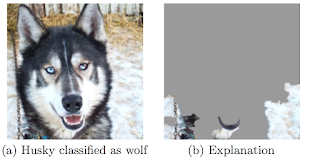But let's start at the very beginning. Here is my evolution of how I used to write stuff and how I got from this:

to that:

School:
OpenOffice - I guess everyone has some youthful indiscretions.
I remember how much time i spent trying to position each figure correctly and trying to make every line in the table of contents to start at the same position.
1. Semester:
I heard of this "LaTeX" - thing and there was a rumor that this might be useful throughout the whole time at university, at the latest for the bachelor thesis. So I decided to learn LaTeX from the very beginning and chose to write a formulary for descriptive statistics as a first project.
The result was very neat. So proud of myself.
Started to missionize other students.
2.- 5. Semester:
Then I continued to use LaTeX for almost every document. Mostly I did a lot of presentations with the beamer class. Most of the creation time spent choosing the best themes and colors, and creating the perfect title slide.
I discovered Sweave, but did not want to use it and still copied R output into my documents and included figures manually.
Also switched from gedit to emacs about that time.
6. Semester:
Bachelor thesis time. The first time I needed to embed more R-Code into a document. I wanted my R-Code to look good. So I searched and found: "Hm ... what's knitr? ... want to meet my bachelor thesis?"
At the same time I learned subversion. Felt odd to use, but at the same time I felt there was a deeper power in revision tools.
1. Master Semester:
Revision Control: Level Up! Now working with git.
Facebook update: Now in a bigamous relationship with knitr and emacs.
But now back to my latest paper. I used different tools to create it. Here are the ingredients plus why I used them:
LaTeX
In my opinion, there is no alternative to LaTeX for scientific paper including at least one number or one figure. There have been many discussions about LaTeX vs. Word (or Word-alikes). I like the personal summary in this blog.
Tufte book documentclass
A very fancy documentclass for LaTeX I tried for the first time. Most Latex-adversaries I know complain about every slide show or paper looking the same and I have to admit that's true. Of course you can build your own documentclasses and styles from scratch, but I really don't feel like it. Fortunately there are already some other classes around, like the fancy Tufte package, which I like very much. Edward Tufte (statistician) has done a lot in the fields information design and data visualization.
The Tufte book document class is based on the style Tufte wrote his books in.
The most significant impression is the broad margin, which can be used for notes, references and pictures.
R
Any analysis we are doing at university (I am studying statistics) is done with R. There are of course alternatives like Julia, Matlab, Python, ...
R might not be the fastest language and from my subjective feelings it is a little messy.
But I definitely love the huge ecosystem of packages, which are making R a pleasure to use. Also the plot functionality is amazing (I am kind of a ggplot2 fanboy)
knitr
Speaking of the ecosystem, knitr is one of the best examples for useful add-on packages. knitr makes integrating R code and output in documents simple and even fun. It is based on Sweave, but eliminates some problems and extends the functionality. I also like the fact that you are not tied to LaTeX documents, but you can, for example, also write markdown files and convert them to html.
emacs
Personally I am using emacs a lot. Though I think RStudio evolved very nice as well. The integration of knitr is very neat, better than in emacs. But I feel very comfortable in emacs, that's why I haven't switched to RStudio yet.
git
A revision control system. Mostly used for coding, but this time I used it for my seminar paper. It is not necessary to use revision control for a paper, but it definitely has some benefits. First of all it is a good feeling to be able to revert back to older revisions, for example in case you accidentally deleted something. One cool side effect is, that you automatically begin to split bigger tasks in small steps, because every time you commit something, you are encouraged to write a short text about what changed.
That's basically my my status quo of tools I use for papers and presentations.
My repository for the paper is public, just visit my github account. Here is the PDF.
By the way, the paper I wrote is about conditional inference trees, where I also did a presentation.

